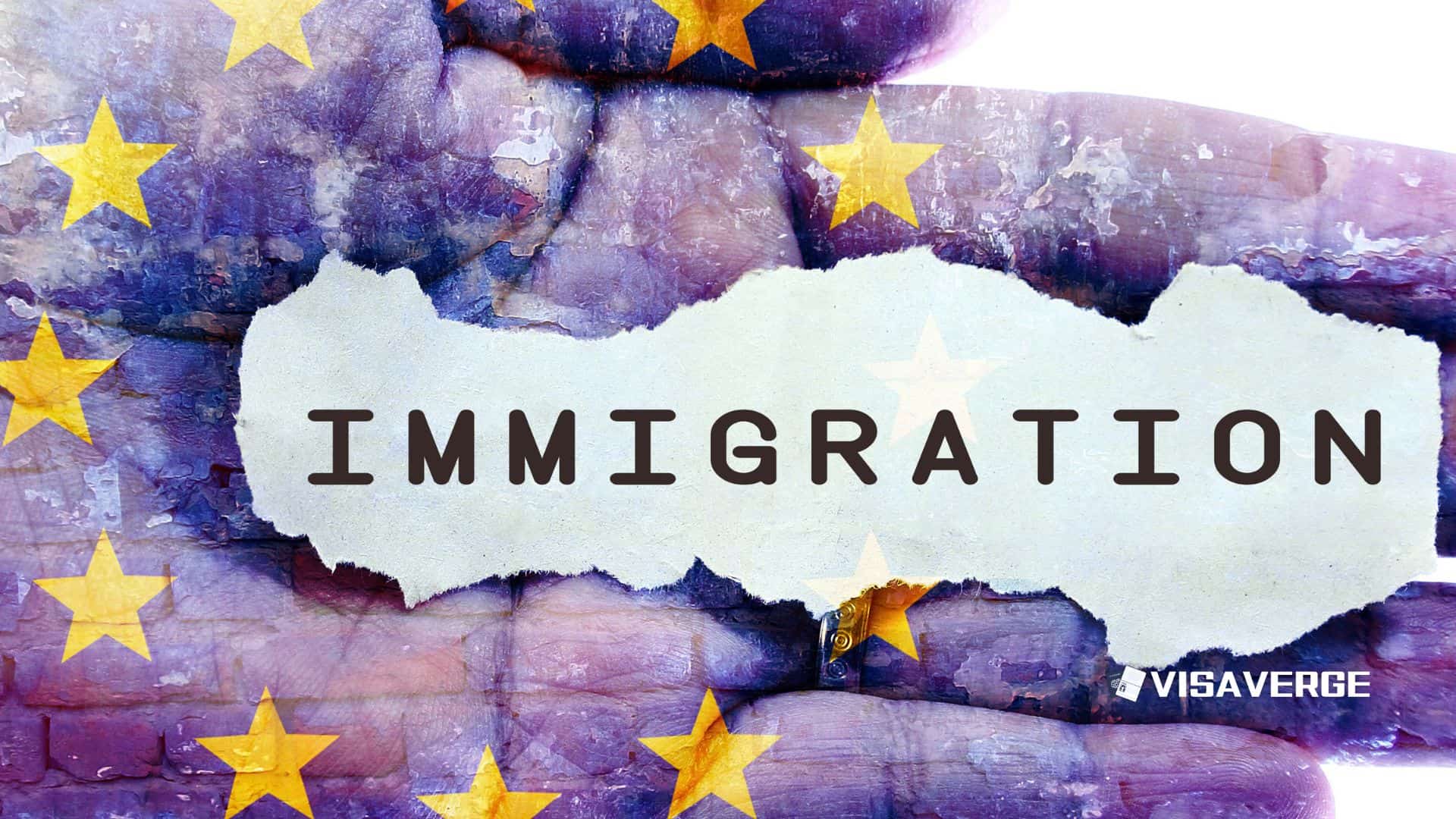Key Takeaways
• Supreme Court limits nationwide injunctions to itself, allowing federal birthright citizenship order to proceed.
• H.R. 569 aims to restrict citizenship to children of U.S. citizens, lawful residents, and military members.
• Millions of children born to non-citizen parents without lawful status face legal uncertainty and access risks.
The recent Supreme Court ruling on birthright citizenship has sparked intense debate and concern across the United States 🇺🇸. This analysis examines the purpose and scope of the ruling, the methods used to reach it, key findings, and the broader implications for families, lawmakers, and the legal system. The focus is on the response from Rep. Bonnie Watson Coleman, the legislative and judicial context, and the potential effects on millions of children and families. The analysis also presents data and visual descriptions to help readers understand the trends and patterns shaping this critical issue.
Purpose and Scope

The purpose of this analysis is to explain the Supreme Court’s recent decision that limits the authority to issue nationwide injunctions to the Supreme Court itself, and how this impacts birthright citizenship in the United States 🇺🇸. The scope includes:
- The background and context of the ruling and related federal orders
- Legislative developments, especially H.R. 569, the Birthright Citizenship Act of 2025
- The practical effects on children born to non-citizen parents
- Stakeholder perspectives, including Rep. Watson Coleman’s condemnation and Justice Sotomayor’s dissent
- Trends, comparisons, and evidence-based conclusions about the future of birthright citizenship
Methodology
This analysis draws on official statements, legislative texts, Supreme Court opinions, and expert commentary. Key sources include:
- Rep. Bonnie Watson Coleman’s public statement (June 27, 2025)
- The Supreme Court’s majority and dissenting opinions
- The text of H.R. 569 and related legislative materials
- Analysis from VisaVerge.com and other immigration law experts
- Official government resources, such as congress.gov for legislative tracking
Information is presented objectively, using precise language and visual descriptions to clarify complex legal and policy issues. The analysis avoids bias and focuses on factual reporting and logical reasoning.
Key Findings
- The Supreme Court ruling restricts nationwide injunctions to the Supreme Court itself. This means lower federal courts can no longer block federal policies for the entire country, even if those policies have broad effects.
- A federal order redefining birthright citizenship is set to take effect in 30 days. This order could deny automatic citizenship to children born in the United States 🇺🇸 to non-citizen parents without lawful status.
- H.R. 569, the Birthright Citizenship Act of 2025, seeks to limit who qualifies for citizenship at birth. The bill would grant citizenship only to children born to U.S. citizens, lawful permanent residents, or certain non-citizen military personnel.
- Rep. Watson Coleman strongly opposes the ruling and the federal order. She calls the decision a “shameful abdication of responsibility” and pledges to work with New Jersey leaders to protect affected residents.
- Justice Sotomayor’s dissent warns of harm to children and urges families to prepare for class-action lawsuits. Legal experts expect a wave of litigation and state-level responses.
- Millions of children could face legal uncertainty, risking access to education, healthcare, and social services. The ruling may create a new class of stateless children and deepen state-federal conflicts.
Data Presentation and Visual Descriptions
To help readers understand the scope and impact of these changes, the following visual descriptions summarize the key data and trends:
Table: Who Qualifies for Birthright Citizenship Under H.R. 569
| Parent’s Status | Child Born in U.S. 🇺🇸 | Citizenship at Birth? |
|---|---|---|
| U.S. citizen or national | Yes | Yes |
| Lawful permanent resident (Green Card holder) | Yes | Yes |
| Non-U.S. national with lawful status in military | Yes | Yes |
| Non-citizen, no lawful status | Yes | No |
Visual Description: Imagine a simple table with four rows. The first three rows show green check marks for citizenship at birth, while the last row, for children of non-citizens without lawful status, has a bold red “No.” This highlights the sharp divide created by the proposed law.
Timeline: Key Events Leading to the Ruling
- January 20, 2025: Presidential order issued to clarify and restrict birthright citizenship
- January 21, 2025: H.R. 569 introduced in the House of Representatives
- June 27, 2025: Supreme Court limits nationwide injunctions, allowing the federal order to proceed
- July 27, 2025 (approximate): Federal order set to take effect
Visual Description: Picture a horizontal timeline with four major points, each labeled with the date and event. The timeline shows how quickly the legal and policy landscape has changed in just six months.
Bar Chart: Estimated Number of Children Affected
- Children born to non-citizen parents without lawful status (annual estimate): 300,000+
- Children potentially at risk of losing automatic citizenship: 2-4 million (cumulative over several years)
Visual Description: Imagine a bar chart with two tall bars. The first bar represents the annual number of children born to non-citizen parents without lawful status. The second, much taller bar, shows the cumulative number of children who could be affected over several years if the policy remains in place.
Comparisons, Trends, and Patterns
Historical Context
For nearly 150 years, the Fourteenth Amendment has guaranteed citizenship to all persons born or naturalized in the United States 🇺🇸. This principle, known as birthright citizenship, has been a cornerstone of American immigration law since 1868. The current push to restrict this right marks a major shift from past practice.
Legislative and Judicial Trends
- Legislative Efforts: H.R. 569 is the latest in a series of attempts to redefine “subject to the jurisdiction” in the Fourteenth Amendment. Previous efforts have failed to gain enough support, but the current political climate has renewed momentum for change.
- Judicial Shifts: The Supreme Court’s decision to limit nationwide injunctions centralizes power and reduces the ability of lower courts to block federal policies. This procedural change could make it harder for affected groups to challenge new immigration rules quickly.
State-Federal Conflicts
States like New Jersey, led by lawmakers such as Watson Coleman, are preparing to resist federal restrictions and protect residents. This sets up a likely conflict between state and federal authorities over who has the power to define and protect citizenship rights.
Stakeholder Perspectives
- Rep. Bonnie Watson Coleman: She calls the Supreme Court’s decision a “shameful abdication of responsibility” and vows to work with state leaders to shield New Jersey residents. Watson Coleman stresses that “all individuals are welcome in the state regardless of birthplace or parentage.”
- Supreme Court Majority: The majority opinion focuses on judicial procedure, not the substance of birthright citizenship. By limiting nationwide injunctions, the Court allows the federal order to take effect while leaving constitutional questions unresolved.
- Justice Sotomayor (Dissent): She warns that the ruling “creates uncertainty for millions of Americans, particularly children born to non-citizen parents.” Sotomayor urges families to prepare for class-action lawsuits to defend their rights.
- Rep. Brian Babin and Supporters: They argue that restricting birthright citizenship restores constitutional fidelity and addresses concerns about illegal immigration.
- State Leaders: Officials in states like New Jersey are expected to enact policies to protect residents, reflecting strong opposition to federal restrictions.
Evidence-Based Conclusions
Based on the available evidence, several conclusions can be drawn:
- The Supreme Court ruling has immediate and far-reaching effects. By limiting nationwide injunctions, the Court allows the federal order restricting birthright citizenship to proceed, at least temporarily.
- Millions of children could lose automatic citizenship. If the order and H.R. 569 are fully implemented, children born to non-citizen parents without lawful status may no longer be recognized as U.S. citizens at birth.
- Legal uncertainty and social disruption are likely. Families may face confusion and hardship as they navigate new legal requirements. Access to education, healthcare, and other services could be at risk for affected children.
- State-federal conflicts will intensify. States like New Jersey are preparing to challenge federal restrictions and protect their residents, setting up potential legal battles.
- Further litigation is expected. Justice Sotomayor’s call for class-action lawsuits suggests that the courts will continue to play a central role in resolving these issues.
Limitations
This analysis is based on information available as of June 27, 2025. The situation is evolving rapidly, and new legal challenges, legislative actions, or executive orders could change the landscape. The actual number of children affected depends on how the federal order is implemented and interpreted by courts and agencies. Data on the long-term social and economic impacts is not yet available.
Practical Guidance and Next Steps
For families, advocates, and policymakers, several practical steps are recommended:
- Stay informed about legal developments. Monitor updates from official sources such as congress.gov for the latest on H.R. 569 and related bills.
- Consult with legal aid organizations. Families who may be affected should seek advice from immigration attorneys and advocacy groups about their rights and options.
- Prepare for possible legal action. As advised by Justice Sotomayor, affected families should consider joining or supporting class-action lawsuits to challenge the new policies.
- Engage with state and local officials. Residents in states like New Jersey can contact their representatives, including Watson Coleman, for information on state-level protections.
- Review official forms and requirements. For those seeking proof of citizenship or lawful status, refer to the U.S. Citizenship and Immigration Services (USCIS) Forms page for the latest application forms and instructions.
Official Resources
- Rep. Bonnie Watson Coleman’s Office: For statements and constituent services, visit the U.S. House of Representatives official website.
- Legislative Tracking: For updates on H.R. 569 and other bills, use congress.gov.
- White House Presidential Actions: For executive orders and statements, see the White House Presidential Actions archive.
- USCIS Forms: For citizenship and immigration forms, visit the official USCIS forms page.
- Legal Aid and Advocacy: Seek help from local immigrant advocacy organizations for guidance on legal challenges and class-action suits.
Final Thoughts
The Supreme Court’s ruling and the federal order on birthright citizenship represent a turning point in American immigration policy. As reported by VisaVerge.com, the combination of judicial, legislative, and executive actions could reshape the meaning of citizenship for millions of children and families. The coming months will be critical as legal challenges unfold, states respond, and Congress debates the future of birthright citizenship in the United States 🇺🇸. Families, advocates, and policymakers must remain vigilant and proactive to protect the rights and well-being of all children born on American soil.
Learn Today
Birthright Citizenship → Automatic U.S. citizenship granted to almost all people born on U.S. soil under the 14th Amendment.
Nationwide Injunction → A court order blocking a federal policy’s enforcement across the entire country rather than a single case.
H.R. 569 → Legislative bill titled Birthright Citizenship Act of 2025 aiming to restrict citizenship at birth eligibility.
Dissenting Opinion → A Supreme Court judge’s formal disagreement with the majority ruling, expressing alternative legal reasoning.
Class-action Lawsuit → A legal case filed by a group of people collectively challenging policies or actions affecting them.
This Article in a Nutshell
The Supreme Court ruling restricts nationwide injunctions, letting a federal order redefine birthright citizenship. This impacts millions of children born to non-citizen parents. Legislative bills like H.R. 569 seek to limit citizenship eligibility. Advocates warn of deep social and legal consequences amid rising state-federal conflicts and potential class-action lawsuits.
— By VisaVerge.com













